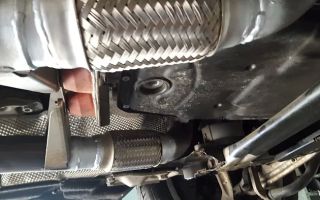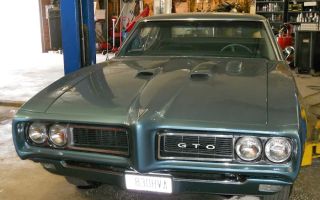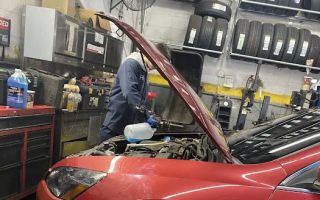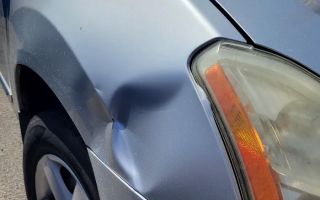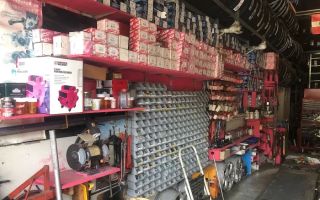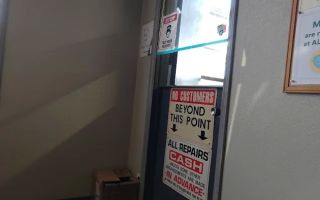Can a Jumpstart Save Your Battery or is Replacement Necessary?
As a car owner, there’s nothing more frustrating than being stuck with a dead battery. It’s one of those situations that can throw your entire day off, especially if you’re in a rush or far from home. One of the most common solutions that come to mind in such situations is to give your car a jumpstart, but the big question is: Can a jumpstart save your battery, or is a replacement necessary? In this article, I’ll walk you through everything you need to know about jumpstarting a car, when it’s effective, and when a battery replacement is the better choice. From personal experience, I’ve learned a lot about these car troubles and the best solutions that can get you back on the road quickly. Let’s dive in!

Pick Your Part - Help Yourself
1232 Blinn Ave, Wilmington, CA 90744, USA
1. Understanding What Happens When Your Car Battery Dies
When your car battery dies, it usually happens because the battery isn’t able to hold a charge anymore. It could be due to old age, extreme weather conditions, or a drain on the battery, like leaving the headlights on for too long. A dead battery means your car’s electrical system isn’t getting the power it needs to start the engine. In this case, a jumpstart could be the immediate solution you need to get things running again. However, this doesn’t always mean your battery is still good as new.
What I’ve learned through experience is that a jumpstart can get you back in action temporarily, but it doesn’t always resolve the underlying problem if the battery is already failing. Let’s say you jumpstart the car, and it starts up without any issue. You might think everything is fine, but in reality, your battery might not be able to hold a charge for long, which could lead to another dead battery soon after. In those cases, it’s important to consider the long-term health of your battery.

Pick Your Part - Greer
13054 E Wade Hampton Blvd, Greer, SC 29651, USA
2. How a Jumpstart Works: The Science Behind It
A jumpstart involves connecting your car’s dead battery to a charged one using jumper cables. Essentially, what you’re doing is transferring energy from the good battery to the dead one, which temporarily powers the vehicle’s electrical system. Once the car is running, the alternator will take over and recharge the battery while the engine is running. This is why it’s often enough to get you going again if the issue is simply a drained battery.
However, a jumpstart can only give the battery enough charge to get the engine running again. If the battery is too old or damaged, the alternator won’t be able to recharge it fully. This is when the problems start. From personal experience, I’ve found that even after a successful jumpstart, if my car’s battery was older than 3–5 years, it would often die again soon after. In such cases, a jumpstart might be more of a temporary fix than a permanent solution.
3. When is a Jumpstart Sufficient?
There are times when a jumpstart is enough to get you going, especially if the battery is relatively new or has simply been drained by leaving lights or accessories on for a while. This could happen if you’re running errands or your car is sitting idle for an extended period. In such cases, a jumpstart can get your car back on the road without any further issues. A jumpstart is also helpful if the battery hasn’t been fully drained and just needs a little boost to get the engine turning over again.
For example, I’ve experienced a time when I left my headlights on while I was in a store for about 30 minutes. When I came out, my car wouldn’t start, and I immediately thought the battery was dead. I called a friend for a jumpstart, and once the cables were attached, the car started right up. It was a simple case of a drained battery, and I didn’t need to replace it. That being said, if your car is older or if you’ve noticed it’s been taking longer to start recently, you might be looking at a battery replacement rather than just a jumpstart.
4. Signs That a Jumpstart Won’t Be Enough
While jumpstarting your car can be effective in the short term, there are signs to watch for that suggest it’s time for a battery replacement:
1. Frequent Jumpstarts
If you find yourself needing a jumpstart frequently, this is a clear indication that your battery is on its last legs. Frequent jumpstarting puts additional strain on both the battery and the alternator, which may lead to more expensive repairs down the line.
2. Slow Cranking
When you start your car, do you notice that it cranks more slowly than usual? This can be a sign that the battery’s charge is weakening, and even after a jumpstart, it may not hold the charge for long.
3. Dashboard Warning Lights
If your dashboard displays warning lights, especially a battery or alternator warning, it could mean that your battery isn’t charging properly. In these cases, a jumpstart might get the car running again temporarily, but you may need to replace the battery to avoid further issues.
5. How to Know When Your Battery Needs Replacing
While a jumpstart might get you out of a jam, replacing your battery when it’s necessary can save you time, money, and frustration in the long run. You should consider replacing your battery if:
1. The Battery is More Than 3–5 Years Old
Batteries have a finite lifespan, typically lasting between 3 to 5 years, depending on usage and environmental conditions. If your car’s battery is beyond this age, it might be time to replace it, especially if you’re experiencing repeated problems with starting the engine.
2. The Battery is Swollen or Leaking
Visually inspect your battery. If it looks swollen, cracked, or leaking any fluid, it’s definitely time for a replacement. A swollen battery is often caused by excessive heat, while leaks could indicate internal damage or corrosion.
6. How Roadside Assistance Can Help With Battery Issues
If you’re in a pinch and unsure whether you need a jumpstart or a new battery, roadside assistance can be a huge help. Many towing and roadside services not only offer towing but also provide jumpstarting services. They can come to your location and help you start your car. If your battery is beyond saving, they can tow your car to a service center for a replacement.
In my experience, having access to roadside assistance can make all the difference. I once found myself stranded in a parking lot with a dead battery and no way to get to a repair shop. I called Rescue & Towing, and they arrived within 30 minutes. They were able to jumpstart my car, and even suggested I get my battery tested at a nearby service center, which turned out to be a great recommendation.
If you’re unsure whether your car’s battery can be saved with a jumpstart, or if it’s time for a replacement, don’t hesitate to reach out to professional roadside assistance services like Rescue & Towing. They offer fast and reliable solutions to all kinds of car troubles, including battery issues.




